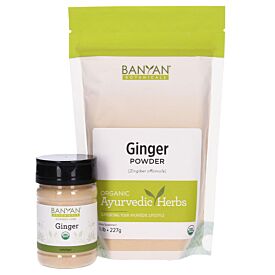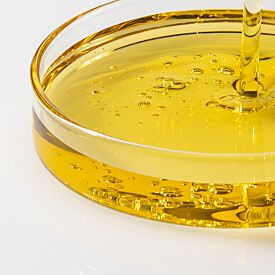Balancing Vata with a Fall Cleanse
One of the most important gifts of Ayurveda is the knowledge that we are not separate from anything else in the Universe, not even the intangibles. The mind, body, and spirit are all one and the same, and connected with all else that exists. When a butterfly flutters its wings on the other side of the planet, we really are influenced by it in a subtle way.
Our system is constantly working to maintain homeostasis, making continual adjustments to adapt and remain in harmony with nature. When the environment around us changes, we are affected, much as a boat is rocked by the movement of the ocean. Sometimes we can be thrown out of balance when there are too many changes, too many toxins accumulated, or a weakness has developed—especially in our digestive system. It is easier to maintain harmony and balance when we stay near equilibrium. When imbalances build and accumulate, we may see more drastic and long-lasting effects which, in turn, are more difficult to eliminate.
Seasonal Changes and Imbalances
According to Ayurveda, our health is more vulnerable when one season cycles into another.1 The change in seasons has an especially strong impact on us, making it easier for imbalance to take root. In the fall, vata shows itself as drier, rougher, and windier weather, which increases these qualities within us. The leaves dry up and fall off the trees, the cold wind blows, and the days grow shorter and darker. This is the time when we may develop vata imbalances such as dry skin, stiff joints, constipation, bloating, disturbed sleep, and changeable moods like anxiety, loneliness, and scatteredness.
If you are curious how vata may influence your own health and character, our Ayurvedic Profile™ quiz is a perfect place to start. The quiz is designed to help you identify your own special constitution, or prakriti, and also your current state of balance, or vikriti.
Ayurveda teaches that vata is responsible for 60% of all diseases regardless of prakriti, so it is important to soothe vata as soon as these little niggly symptoms begin to appear. To stay healthy, we need to eliminate the buildup of excess doshas on a regular basis and, as fall naturally stirs up vata, it is a perfect time for many of us to do a vata-soothing cleanse.
The Ayurvedic Cleanse
Another wonderful gift Ayurveda offers is the knowledge of how to cleanse and rejuvenate. We can regularly practice an Ayurvedic cleanse at home and, for a more thorough purification, we can turn to panchakarma—a special and profound type of balancing that is performed under the supervision of a trained Ayurvedic specialist.
If you have never done an Ayurvedic cleanse before, you might begin by reading An Introduction to Ayurvedic Cleansing. You can add more support to your cleanse by tailoring it to address whichever dosha is most out of balance. Today we will take a special look at calming vata.
Soothing Vata During Your Cleanse
Soothing is the perfect word to help us understand how to care for vata. As vata is changeable, light, dry, cool, and rough, we want to focus on the opposite actions of calming, quieting, and gently loving ourselves to bring vata back into its home. Here are some general guidelines to help you on your way:
- In North America, the best time to do a vata-pacifying cleanse is generally between late October and late November as fall is near its end and beginning the transition to winter.2
- Treat yourself with gentle and loving kindness in all things. Keep calm and focused. This is the time to slow down and enjoy life. Avoid too much screen time and other distractions. Unbalanced vata loves distraction!
- Give yourself an oil massage (abhyanga) every day. The best times to do this are early in the morning or late in the afternoon. When you give yourself the massage, only do the massage—no multitasking! You can use plain Sesame Oil or Vata Massage Oil.
- Practice nasya—put a bit of Nasya Oil, Sesame Oil, or Ghee on your pinkie and rub a small amount into your nostrils a couple times a day to help protect them from the windy and dry weather of fall.
- Basti, the most important therapy to soothe vata imbalance, is best done under professional guidance, so check with your Ayurvedic practitioner or doctor for specific recommendations.
- Eat fresh, lovingly prepared, vata-calming foods, making sure they are warm, soothing, grounding, cooked, and slightly oily, like a vata-pacifying kitchari. Kitchari is a balanced, spiced stew that provides support and nourishment, while at the same time allowing the digestive system to relax and rejuvenate. I like to add a stick of kombu to the beans at the beginning of cooking to provide more minerals and help with digestion. Feel free to add a bit more ginger to further warm vata. Remember to eat in a calm and quiet way and enjoy the experience of nourishing yourself.
“A healing diet gladdens the heart, nourishes the body, and revives memory.”
- Practice vata-calming yoga (slow, gentle, and restorative), pranayama (breathing exercises—especially Nadi Shodhana), and meditation like Empty Bowl. Make these part of your daily routine, doing them at regular times, and giving them your full attention. Practice mindfulness throughout the day. The mind is the first to become imbalanced, and having pranayama and meditation practices are very helpful to calm it down.
- Make “Don’t worry, be happy” your motto. Live simply and let go of the little things. Your practices of yoga, pranayama, and meditation will all help you learn to handle stress with ease. Life is wonderful when you train yourself to relax into it.
Keep in mind that sometimes the very techniques that soothe vata can disrupt pitta or kapha, so it is important to know both your prakriti and vikriti before you begin. Along with the insights you’ll gain from the Ayurvedic Profile™ quiz, an Ayurvedic practitioner can be especially helpful in identifying any imbalance and determining the best path for you. In this way you will learn how to fine tune your routines, diet, lifestyle, and habits to keep you in optimal health.
In the meantime, I wish you the best on your journey to wellness and happiness.













